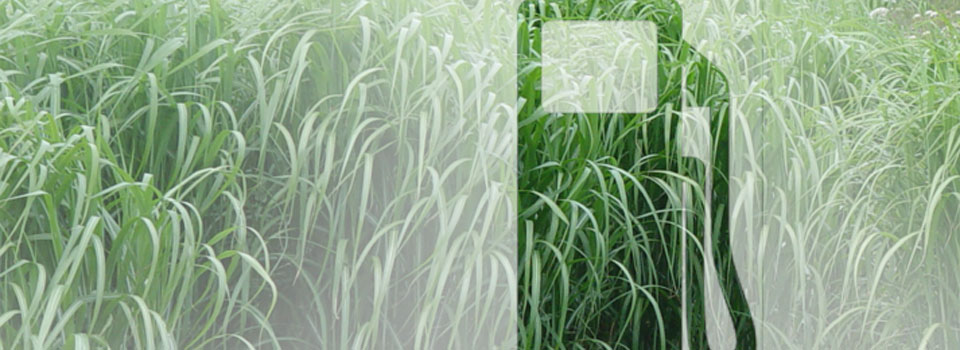When it comes to growing crops to make into biofuels, the talk usually centers on corn or switchgrass. But in the Southeast, the ornamental grass Miscanthus may outgrow them both.
In published research comparing it to switchgrass, Miscanthus produces two times as much tonnage as switchgrass, said Andrew Paterson, director of the University of Georgia Plant Genome Mapping Laboratory, a facility jointly housed by the College of Agricultural and Environmental Sciences and Franklin College of Arts and Sciences.
West of the Mississippi River, he said, where rain is less plentiful, switchgrass is more competitive.
Miscanthus is commonly planted at the end of driveways in Georgia and grows more than 12 feet tall with wispy white flowers that clump together to look like large feathers.
“As an agricultural crop, it’s carbon neutral,” Paterson said, meaning that the plant absorbs as much carbon dioxide as it releases when converted to fuel.
It is a perennial that only needs to be planted once every decade by farmers. Already used as a biofuel crop in Europe, it can also be combined with wood to burn to produce electricity.
Using a $1.2 million grant from the U.S. Department of Agriculture and Department of Energy, Paterson will study the plant’s genes. It is closely related to sugarcane and sorghum, two plants he has extensively researched.
Paterson first will figure out how the 19 chromosomes that make up Miscanthus relate to the 10 found in sorghum. Then, he hopes “to translate what we know about sorghum to accelerate Miscanthus improvement,” he said.
For instance, he knows that six genes in sorghum influence flowering. He wants to find a matching set in Miscanthus and use the genes to slow down flowering in the plant. Less time spent making flowers means more time producing biomass, the stuff used to make biofuels.
“We already know where the target genes are in sorghum,” he said. “If they are in the corresponding regions in Miscanthus, we can greatly accelerate the development of diagnostic tools for breeding Miscanthus.”
He’s also looking for DNA markers that indicate stalk size and bud production. And he plans to explore the plant’s flooding tolerance based on comparative data from rice.
Paterson is working with the private company Mendel Biotechnology, which has a leading Miscanthus breeding program. Its scientists are using their locations in Germany, China and Alabama to characterize and evaluate varieties of Miscanthus.
So far, they’ve discovered four species of Miscanthus that can either be biofuel producers or gene contributors. One is completely sterile. “It tries to flower but it won’t produce any seed,” Paterson said.
That’s good news when it comes time for farmers to harvest the crop. But because that variety of Miscanthus doesn’t produce any seed, plant breeders would have to sell the plant as rhizomes. And farmers would have to pay more to grow that type of Miscanthus. Seeds would be less expensive.
“With each new plant we look at, we find something surprising,” he said. “I’m looking forward to seeing what those surprises are for Miscanthus.”


